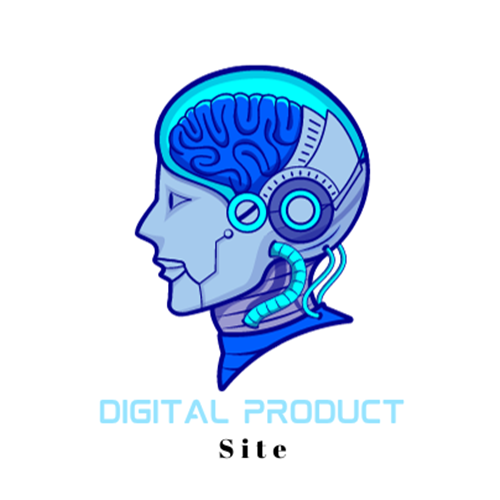Digital product security: In the fast-paced digital era, where our lives are intertwined with technology, ensuring the security of digital products has become paramount.
From personal data to sensitive business information, the digital realm is fraught with potential threats that can compromise security.
This article explores the landscape of digital product security, shedding light on common threats, key components, strategies for enhancement, case studies.
The delicate balance between security and user experience, emerging trends, and the challenges faced in this evolving domain.
Introduction
Definition of Digital Product Security
Digital product security refers to the measures and protocols implemented to safeguard digital assets, including software, applications, and data, from unauthorized access, cyber threats, and potential breaches.
As our reliance on digital tools grows, understanding and implementing robust security measures become imperative.
Importance in the Digital Age
In an age where information is a valuable commodity, the importance of digital product security cannot be overstated.
The increasing frequency and sophistication of cyber attacks make it crucial for individuals and businesses alike to fortify their digital defenses.

Common Threats to Digital Products
Cyber Attacks
Cyber attacks come in various forms, including phishing, ransomware, and denial-of-service attacks. Understanding these threats is the first step toward devising effective security strategies.
Malware and Viruses
Malicious software and viruses can wreak havoc on digital products, causing data loss and system malfunctions. Implementing robust antivirus measures is essential.
Unauthorized Access
Unauthorized access to digital products can lead to data breaches and compromise sensitive information. Strict authentication protocols are crucial in preventing such unauthorized intrusions.
Data Breaches
Data breaches can have severe consequences, including financial losses and damage to reputation. Proactive measures, such as encryption, are vital in mitigating the risks associated with data breaches.
Key Components of Digital Product Security
Encryption
Encryption involves converting data into a secure code to prevent unauthorized access. Implementing robust encryption protocols adds an extra layer of protection to digital assets.
Authentication
Authentication methods, including passwords and biometrics, ensure that only authorized individuals gain access to digital products. Multi-factor authentication adds an additional layer of security.
Firewalls
Firewalls act as barriers between a secure internal network and untrusted external networks. Regularly updating firewall settings helps in blocking potential security threats.
Regular Updates
Regular updates to software and security systems are crucial in addressing vulnerabilities and staying ahead of evolving cyber threats. Neglecting updates can expose digital products to known exploits.

Strategies for Enhancing Digital Product Security
Strong Password Policies
Enforcing strong password policies, including regular password changes and complexity requirements, is a fundamental yet effective strategy.
Employee Training
Human error is a common factor in security breaches. Training employees on security best practices reduces the risk of falling victim to social engineering and other tactics employed by cybercriminals.
Multi-Factor Authentication
Adding an extra layer of authentication beyond passwords significantly enhances security. Multi-factor authentication methods may include SMS codes, biometrics, or security tokens.
Regular Security Audits
Conducting regular security audits helps identify vulnerabilities and weaknesses in digital products. This proactive approach allows for timely remediation before a potential breach occurs.
Case Studies
Notable Examples of Digital Product Security Failures
Examining instances where digital product security failed provides valuable lessons. Learning from past mistakes is crucial in improving overall security measures.
Success Stories in Mitigating Security Risks
Highlighting success stories in mitigating security risks showcases effective strategies and emphasizes the importance of proactive security measures.
Balancing Security and User Experience
User-Friendly Security Measures
Implementing security measures that are user-friendly ensures that individuals are more likely to adhere to them. Striking a balance between security and user experience is vital for widespread adoption.
Impact of Security Measures on User Satisfaction
Analyzing the impact of security measures on user satisfaction helps organizations understand the delicate balance between ensuring security and providing a seamless user experience.
Future Trends in Digital Product Security
Artificial Intelligence in Security
The integration of artificial intelligence in security systems enhances threat detection and response capabilities. AI-driven solutions adapt to evolving threats in real-time.
Blockchain Technology
Blockchain’s decentralized and tamper-resistant nature makes it a promising technology for enhancing the security of digital products, especially in areas like data integrity and secure transactions.
Biometric Authentication
Biometric authentication, including fingerprints and facial recognition, is gaining popularity as a secure and convenient method of access control.

Challenges in Ensuring Digital Product Security
Rapid Technological Advancements
The rapid pace of technological advancements poses challenges in keeping security measures up to date. Proactive adaptation to emerging technologies is crucial for staying ahead of potential threats.
Evolving Cybersecurity Threats
As cyber threats evolve, so must security measures. Staying ahead of new and sophisticated attack vectors requires continuous monitoring and adaptation of security protocols.
Conclusion
In conclusion, the landscape of digital product security is dynamic and ever-evolving.
As we navigate the digital age, understanding the common threats, implementing key security components, and adopting proactive strategies are essential.
Balancing security with user experience, staying abreast of future trends, and addressing challenges head-on will ensure a robust defense against the ever-present risks in the digital realm.
FAQs
How often should I update my digital product’s security measures? Regular updates are crucial. Aim for at least monthly checks and immediate updates for critical vulnerabilities.
What is the role of artificial intelligence in digital product security? Artificial intelligence enhances threat detection and response capabilities, adapting to emerging threats in real-time.
Why is multi-factor authentication important? Multi-factor authentication adds an extra layer of security beyond passwords, significantly reducing the risk of unauthorized access.
Can user-friendly security measures be as effective as complex ones? Yes, striking a balance between user-friendly measures and robust security is crucial for widespread adoption and effectiveness
Forex Forex Forex Forex Forex Forex Forex Forex Forex Forex Forex Forex Forex Forex Forex Forex Forex Forex Forex Forex Forex Trading Forex Trading Forex Trading Forex Trading Forex Trading Forex Trading Forex Trading Forex Trading Forex Trading Forex Trading Forex Trading Forex Trading Forex Trading Forex Trading Forex Trading Forex Trading Forex Trading Forex Trading Forex Trading Forex Trading Joebenz Joebenz Joebenz Joebenz Joebenz Joebenz Joebenz Joebenz Joebenz Joebenz Joebenz Joebenz Joebenz Joebenz Joebenz Joebenz Joebenz Joebenz Joebenz Joebenz Forex Indicator Forex Indicator Forex Indicator Forex Indicator Forex Indicator Forex Indicator Forex Indicator Forex Indicator Forex Indicator Forex Indicator Forex Indicator Forex Indicator Forex Indicator Forex Indicator Forex Indicator Forex Indicator Forex Indicator Forex Indicator Forex Indicator Forex Indicator Forex market Forex market Forex market Forex market Forex market Forex market Forex market Forex market Forex market Forex market Forex market Forex market Forex market Forex market Forex market Forex market Forex market Forex market Forex market Forex market




Leave a Reply